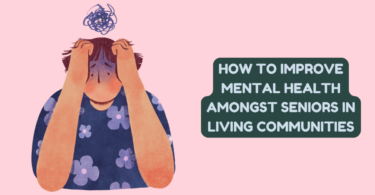
Key Steps to Save Lives
Suicide prevention isn’t just for professionals. Everyone can be a hero and prevent suicide by knowinf this suicide prevention awareness training. In this course, you’ll learn how to recognize the warning signs that someone may be contemplating suicide, ask questions to help them talk about it, comfort and guide them through their crisis, remove means from their environment that could make it easier for them to act on those thoughts (like prescription medications or weapons), and get help from professionals when necessary.
Know the warning signs
When you’re looking for warning signs, keep in mind the following: Depression. Feelings of sadness, hopelessness, and worthlessness are common symptoms of depression. Other symptoms include irritability, anger, or rage; a decrease in appetite; insomnia or excessive sleeping; fatigue (feeling tired); loss of interest in activities that were once enjoyed; anxiety about everyday things such as paying bills or going to work; feelings of guilt over minor things like forgetting an appointment or missing an appointment with your doctor; thoughts about death or suicide.
Ask questions
The first step is to ask questions. You want to ask open-ended questions that encourage the person to open up and share with you. These include: “What are you thinking? How do you feel? What’s going on in your life right now?” If they are willing to share with you, then continue by asking if they have thought about suicide or if they have a plan for how they would do it. Finally, ask them if they have access to any means of committing suicide (such as pills or guns).
Respond with empathy
If you’re not sure how to respond, don’t be afraid to say so. Letting the person know that you don’t know what to say or do can be helpful in itself. You might ask them if there’s anything specific they need from you right now–for example, “Are there any resources I can help connect you with?” or even just “What do you need from me?”
If it’s appropriate for the situation and feels safe for both of you (i.e., no weapons involved), holding their hand may also provide comfort and show that they are not alone in their feelings.
Take action to remove means
If you’re concerned about someone who might be suicidal, there are some things you can do to help. If they are at risk of harming themselves or others, call 911 immediately.
If the person is not in immediate danger and you want to help them, ask them if they have thought about suicide or have a plan for how they might do it. If so, listen carefully and try not to judge them by what they say; instead focus on getting them help as soon as possible by calling 911 or taking other appropriate action (see below).
Get help from professionals.
If you’re worried about a loved one, there are several steps you can take. First, try to get the person to seek help from professionals. Call the 24-hour suicide prevention hotline at 1-800-273-8255 or 911 if the person is in immediate danger of harming themselves or others. You can also call a mental health professional for advice and support. If your friend or family member does not have insurance, consider calling your local crisis center instead–they may be able to help with referrals and resources that won’t require payment upfront (or at all).
You can learn more about how to help someone who may be contemplating suicide by taking this course, which will teach you how to ask questions, comfort and guide, and identify warning signs that can save lives. This course is available online. It’s free for everyone who wants to take it, there are no restrictions on age or location, just an interest in learning more about this important issue.
Conclusion
Remember that you can make a difference in someone’s life by simply asking questions and showing empathy. If you’re worried about someone who may be contemplating suicide, take this course now to learn more about how to help them.






